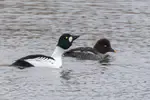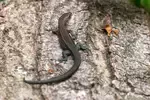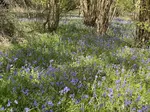- Home
- Cambridgeshire walks
- Fowlmere
RSPB Fowlmere - A Tale of Two Paces
By the time we reached Fowlmere on a crisp February morning, my husband was already power-marching 50 yards ahead, his boots crunching loud warnings into the frozen path.
I hung back, trying to place each step quietly, wondering if there was any point when every bird within earshot had just heard the brass band coming.
If you’ve ever walked with someone who treats a nature reserve like a race, you’ll know that sinking feeling as wildlife becomes nothing more than a blur of fleeing backsides.
This is the story of how I stopped matching his pace, found my own, and in the silence between his footsteps, started to notice the reserve’s hidden life.
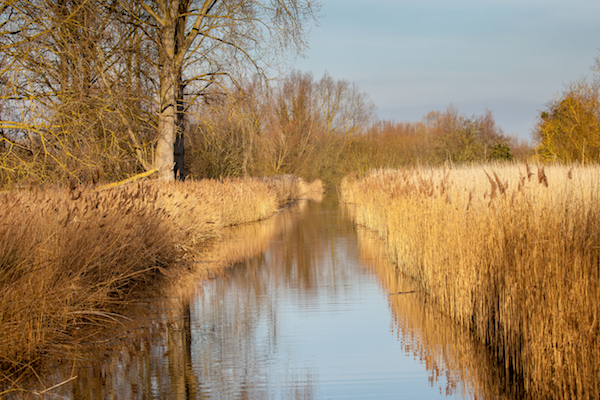 Fowlmere in February
Fowlmere in FebruaryWhy You Will Love This Place
If you have ever felt like you’re "doing nature wrong" or that you lack an expert’s patience, Fowlmere is for you.
It’s a place that doesn't demand expertise.
It rewards you for the simple act of standing still, for choosing the soft grass verge over the noisy gravel path.
A reserve where you have a genuine chance to feel the thrill of a secret sighting, one that feels like it belongs only to you.
The Rewards of Stillness
My husband’s method is to cover ground.
My method is to let the ground reveal itself.
As he marched on, I lingered by a small stream. The water, fed by the rare chalk springs here, ran so clear I could see the bright green of watercress clinging to the stones. The air smelled of damp soil and winter.
On the water sat a male Teal, a small duck species that spends the winter here.
In the soft light, its chestnut head glowed like polished wood. A few feet away, a female, painted in subtle, perfect browns, drifted silently.
Had I been marching, I would have walked right past them. It was a quiet little scene, a private reward for lagging behind.
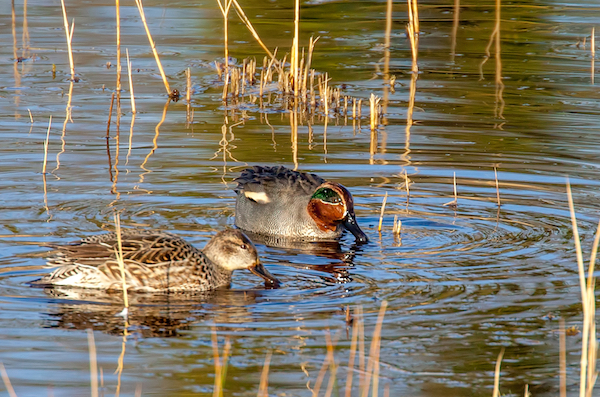 My quiet reward for lagging behind. In the soft light, the male's chestnut head glowed like polished wood. This private little scene is one I would have walked right past otherwise.
My quiet reward for lagging behind. In the soft light, the male's chestnut head glowed like polished wood. This private little scene is one I would have walked right past otherwise.Later, trudging through a muddy patch, I saw a flicker of movement.
Two brown hares in the field to the side of the path.
All the frustration about the pace of the walk vanished, replaced by a sharp, breathless focus.
"Stop! Don't move!" That voice in my head was so forceful I was sure my husband would have heard it too.
Slowly I raised my camera, bracing my shaking arms against my sides hoping to prevent a blurry photo. I managed a couple of frames before the hares raced out of sight, their powerful legs eating up the field.
I looked for hubby, only to see him disappear around a corner, far ahead.
When I eventually caught up, I murmed "That was lovely seeing the hares!"
He looked at me blankly.
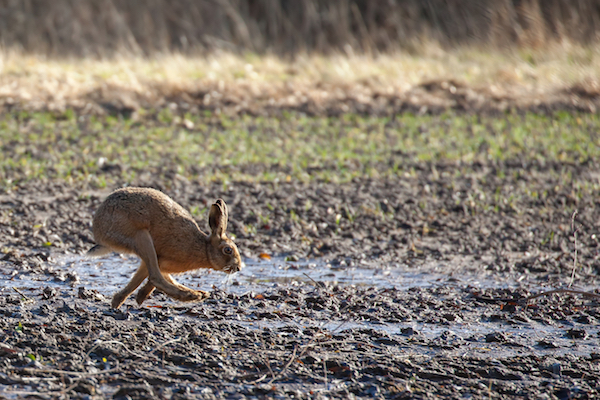 The moment my heart did a familiar little jump. It was a fleeting, thrilling sight that was mine alone; my husband had marched too far ahead to see a thing.
The moment my heart did a familiar little jump. It was a fleeting, thrilling sight that was mine alone; my husband had marched too far ahead to see a thing.Beauty That Meets You Halfway
It’s not that he doesn’t notice anything. A little further on, it was his voice that stopped me. "Look, snowdrops."
A whole cluster of them, their white petals delightful and full of promise for the upcoming spring.
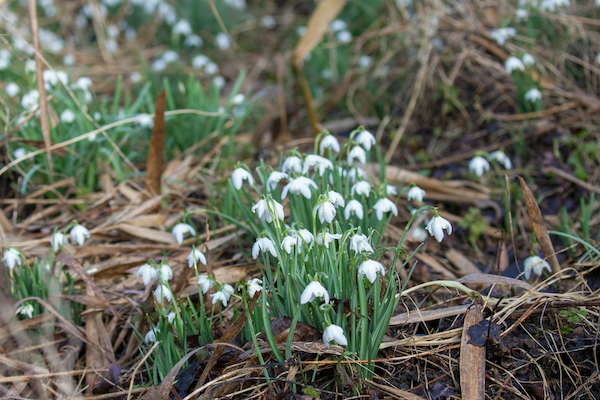 My husband was the one to spot these snowdrops, a lovely reminder that he's good at noticing the things that don't bolt at the sound of his footsteps.
My husband was the one to spot these snowdrops, a lovely reminder that he's good at noticing the things that don't bolt at the sound of his footsteps.He is good at noticing things that don't move as soon as he blunders upon them. It was a moment he could spot just as well as I could, a different kind of beauty that meets you halfway.
And once we were standing still, we noticed more.
In the clear chalk stream, beside the pathway, the peppery green leaves of watercress were growing wild. Seeing them felt like finding a little piece of the reserve's past, a remnant of the old watercress beds still stubbornly clinging on.
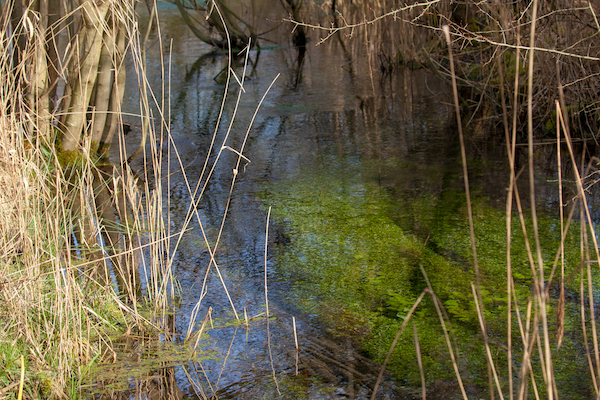 Seeing these peppery green leaves in the clear chalk stream felt like finding a little piece of the reserve's past, a connection I only made because I had chosen to stand still.
Seeing these peppery green leaves in the clear chalk stream felt like finding a little piece of the reserve's past, a connection I only made because I had chosen to stand still.Making Connections in Quiet Moments
Slowing down doesn't just mean you see more wildlife. It means you have time for the things that happen in between the sightings.
After tucking ourselves into the Drewer hide we met the only other person we'd seen all morning.
He was one of those quiet, generous birders who shares knowledge like it's a gift. He told us this was the spot for kingfishers later in the year. He even mentioned a rare white Water Rail that sometimes makes an appearance.
But on that day, neither showed themselves. We did however, see the endeariing site of a Little Grebe and her baby.
We also left the hide with a tip we never would have gotten from a guidebook, a piece of local knowledge freely given.
It was another quiet reward, a connection made possible only because we weren't in a rush to get back to the car park.
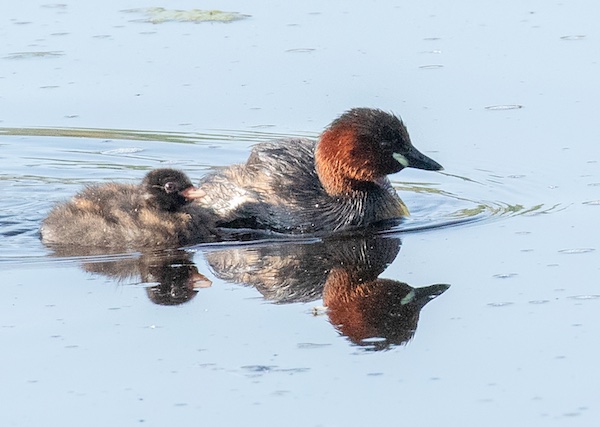 We didn't see the rare bird the stranger mentioned, but we were gifted this endearing sight instead.
We didn't see the rare bird the stranger mentioned, but we were gifted this endearing sight instead.A Reward for Listening
Just when I thought the quiet moments were over, a loud, piercing call cut through the air.
It wasn't a song I recognized, and for a while, I was completely stumped. My eyes scanned the trees next to the hide, and there they were: a small flock of what I first thought were sparrows.
But as I looked closer, the male’s chest glowed with a surprising, vibrant pinkish blush.
Then I saw the distinctive pale cheek patch and it clicked. Linnets. I'd only seen them in books up until that moment.
It was another one of those moments that would have been lost to rushing.
A great memory, and a private discovery that started with a simple question: "What in the world is making that noise?"
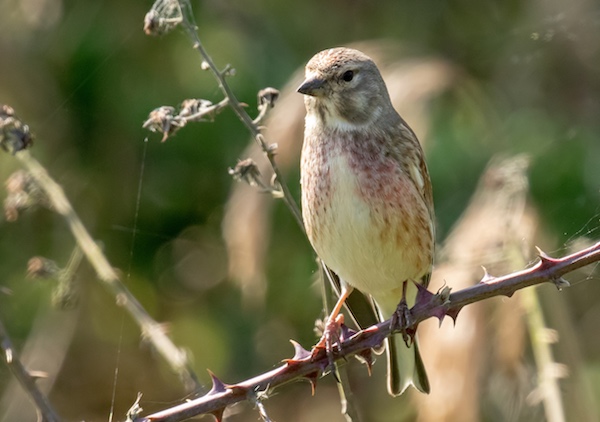 The private discovery that started with me simply asking, "What in the world is making that noise?"
The private discovery that started with me simply asking, "What in the world is making that noise?"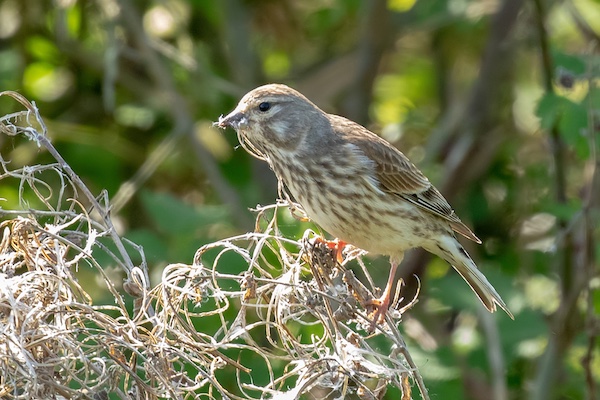 The more subtly beautiful female Linet. Seeing them together as a pair is what helped the memory, and the identification, truly stick.
The more subtly beautiful female Linet. Seeing them together as a pair is what helped the memory, and the identification, truly stick.Practical Field Notes for Your Trip
This is not a place for a mad rush. It's a place for a quiet hour or two. Here’s how I made the most of it.
- My Recommended Gear: Honestly, a good pair of binoculars will give you just as much joy here as a big camera lens. The joy is in the quiet watching, not just the capturing.
- The One Setting I Relied On: I kept my camera in Shutter Priority (S/Tv) at 1/1250s. It sounds technical, but it just means I was always ready for a bird taking flight or a hare darting across a field. It lets you focus on the moment, not the settings.
- Finding Your Way: The reserve is small and the paths are easy to follow. Don't worry about getting lost. The main thing to know is that the path beside the Reed Bed hide can get very muddy after rain. Choose the grass verge. It's quieter anyway.
- When to Go for a Quiet Moment: An early weekday morning is your best bet to have the place almost to yourself.
Your Challenge: Find the Chattering in the Reeds
Forget trying to see everything.
To get your "immediate win," focus on one thing. Your challenge is this: walk to the raised Reed Bed hide in the spring or summer. Find a comfortable spot, and just listen.
You will hear dozens of calls. But listen for one in particular.
A noisy, scratchy, chattering song. It sounds less like a melody and more like an argument. That is the Sedge Warbler.
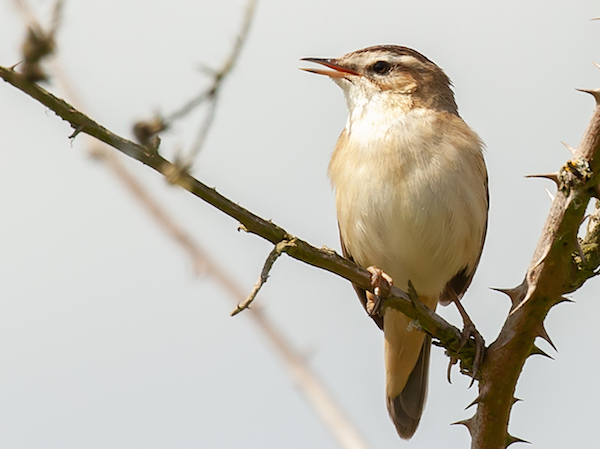 See if you can hear or see a Sedge Warbler on your visit to RSPB Fowlmere.
See if you can hear or see a Sedge Warbler on your visit to RSPB Fowlmere.Now, scan the tops of the reeds where the sound is from.
Be patient.
You might just see him, clinging to a stem, pouring his whole being into that frantic song. Spotting a bird with your ears first is a special kind of magic. It will teach you more than any book.
The Feeling We Can Share
Leaving Fowlmere, I realized the day wasn't about the hares, the Teal or even the Linnets, not really. It was about learning to quiet my own noisy brain and find my own way of seeing what was in front of me.
We all have people in our lives who move a little too fast. But nature offers us a chance to set our own pace.
It’s the difference between just looking at your surroundings and truly seeing them, and that's a feeling we can all find if we give ourselves permission to be the one who lags behind.

About the Author
I’m a wildlife photographer who learns on everyday walks. This site is my field notebook: practical photo tips, gentle ID help, and walk ideas to help you see more—wherever you are.
Step Behind the Wild Lens
Seasonal field notes from my wildlife walks: recent encounters, the story behind favourite photos, and simple, practical tips you can use on your next outing.
